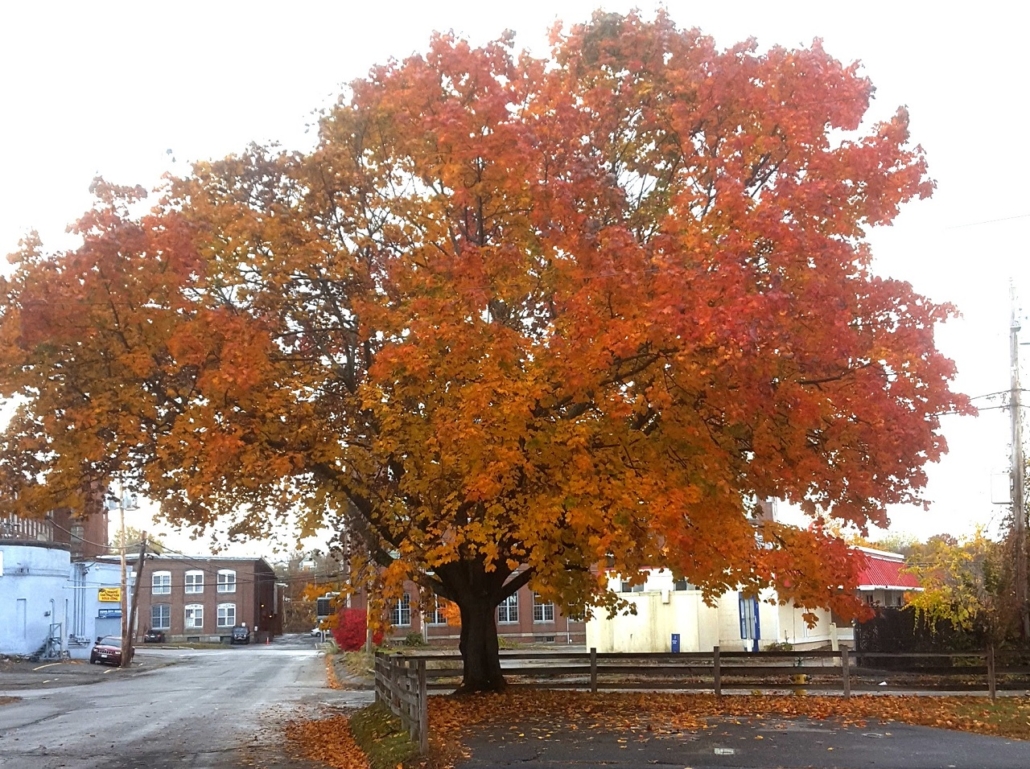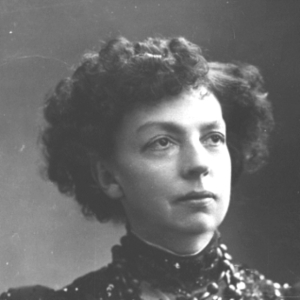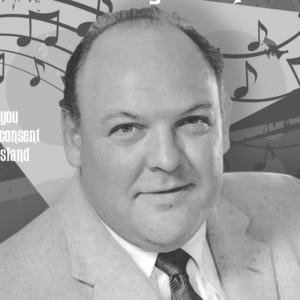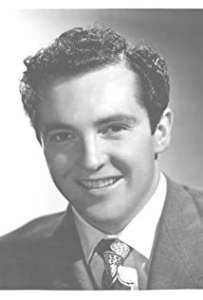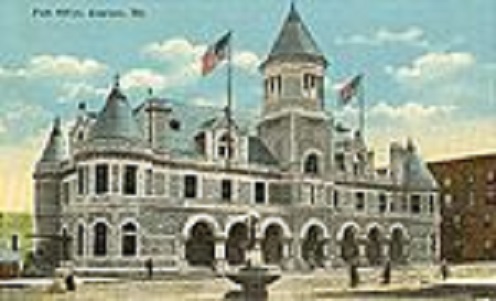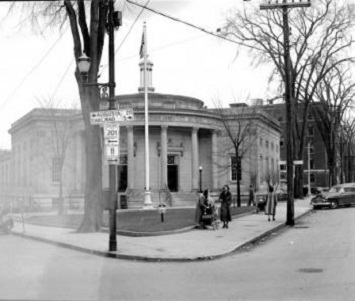FOR YOUR HEALTH – Nonalcoholic Fatty Liver Disease: Are You At Risk?
/0 Comments/in For Your Health/by Website Editor
If you are overweight or obese, weight loss can improve nonalcoholic fatty liver disease.
(NAPSI)—Nonalcoholic fatty liver disease (NAFLD) is one of the most common liver diseases in the United States. NAFLD is typically a silent disease with few or no symptoms, and most people have no complications. However, some people could develop serious complications such as cirrhosis or liver cancer.
Learn more about NAFLD, factors that increase your risk for NAFLD, and research that is leading the way toward new treatments.
What is NAFLD?
NAFLD is a condition in which excess fat is stored in your liver and the buildup of fat isn’t caused by heavy alcohol use.
A more severe form of NAFLD called nonalcoholic steatohepatitis (NASH) also causes inflammation and liver damage. NASH can lead to liver cancer, permanent liver scarring called cirrhosis and liver failure. If you develop liver failure, you may need a liver transplant to survive.
Who is at risk for NAFLD?
If you have certain conditions such as obesity, high cholesterol or type 2 diabetes, you might be at risk for NAFLD. As obesity rates have increased in the United States, NAFLD has also become more common. Research suggests that NAFLD currently affects 30% to 40% of U.S. adults and up to 10% of U.S. children.
Although NAFLD may occur in people of all races and ethnicities, it is most common among Hispanics, followed by non-Hispanic whites. NAFLD is less common among African Americans.
Are there treatments for NAFLD?
Weight loss can improve NAFLD. For people who have NAFLD and are overweight or have obesity, doctors may recommend gradual weight loss through healthy food choices and physical activity.
At this time, no medicines have been approved to treat NAFLD or its severe form, NASH.
Progress in NAFLD Research
Medical research is seeking to better understand and treat NAFLD. The National Institute of Diabetes and Digestive and Kidney Diseases (NIDDK), part of the National Institutes of Health (NIH), conducts and supports NAFLD research. In the past decade, NIDDK-supported researchers have discovered that specific genes play a role in causing NAFLD. These genes may help explain why NAFLD is more common in some racial and ethnic groups than in others.
NIDDK-sponsored studies are also testing possible treatments for NAFLD. For example, an early study suggested that the natural form of vitamin E and a diabetes medicine called pioglitazone may improve some aspects of NASH in adults. More research is needed to see if these treatments are safe and effective.
The Future of NAFLD Treatment
The NIDDK, which marks its 70th anniversary this year, continues to invest in research that will deepen our understanding of NAFLD and may lead to new ways to treat this liver disease and prevent its complications.
To learn more about NAFLD and NIDDK’s liver diseases research, visit the NIDDK website.
STUDENT WRITERS: Tribalism in American Politics
/1 Comment/in China, Erskine, School News, Student Writers' Program/by Website EditorSTUDENT WRITERS PROGRAM
This week featuring: ERSKINE ACADEMY
by Grace Kelso
Tribalism is the behavior and attitudes that stem from strong loyalty to one’s own tribe or social group. Tribalism is a natural part of human behavior that can be seen in all aspects of life. More now than ever, we are seeing strong tribalism in American politics. We are seeing evidence of this when people favor policy proposals from their party and disapprove of proposals from the other party based purely on party and not facts or soundness of policies, or when people only make friends with people from their own party. This essay explains where we see tribalism in American politics.
One example of tribalism in American politics is through reactive devaluation bias. Reactive devaluation bias is the tendency to value the proposal of someone we recognized as an antagonist as being less interesting than if it were made by someone else. An example of this could be found in Daniel Stalder’s article, “Tribalism in Politics” published in Psychology Today in June, 18th, 2018. According to Stalder, Republican Senator, George Vionovich, said, “If he [Obama] was for it, we had to be against it.” This means that even if one of Barack Obama’s policies, or a policy that he was in support of, were very beneficial to the American people, George Vionochich and his Republican colleagues would not support it. This is a clear example of reactive devaluation bias. It is not just Republicans who are guilty of reactive devaluation bias. A study called “Party over Policy” found that when liberal college students were told about a welfare proposal, they were not opposed to it, and some were in favor of it. When they were told that the policy was proposed by Republicans and was not supported by Democrats, their opinions changed. Most of the students were no longer in favor of the policy proposal, according to the same Psychology Today article.
Another example of tribalism in American politics is how it can be seen affecting our social lives. Tribalism based on our political beliefs occurs in how we perceive the people around us and with whom we are in relationships. To put it simply, we treat people with the same political views more favorably than we do people with opposing political views.
A political scientist named Shanto Iyengar has done a lot of research into how political tribalism plays a role in our social life. He found that the percentage of married couples that came from the same party had grown from two-thirds in the 1960’s and 70’s to close to 90 percent today. A survey done in the 1960’s found that only 5 percent of partisans would mind if their son or daughter were in a relationship with someone of the opposite party. This seemed like an irrelevant question at the time. In 2010, the same question was asked for a YouGov Poll and found that 49 percent of Republicans and 33 percent of Democrats would be somewhat or very upset if their son or daughter were in a relationship with someone of the opposite party.
Today, the political party you align yourself with is not just a choice, but an identity. This is seen when people approve of policy proposals from their own party and disapprove of those from the opposing party and when people do not want to be friends with someone from the other party. These are examples of tribalism. America is facing a lot of challenges and we need to be united now more than ever, but why do we still have trouble working with the other side? Maybe we are too egotistical, or maybe we don’t want to seem like hypocrites for agreeing with the opposing party. Only after we get rid of our “us versus them” complex can we make some meaningful change.
Student Writer’s Program: What Is It?
The Town Line has published the first in what we hope will be many articles from local students under the heading of the “Student Writer’s Program.” While it may seem plainly evident why The Town Line would pursue this program with local schools and students, I think it’s worth the time to highlight the reasons why we enthusiastically support this endeavor.
Up front, the program is meant to offer students who have a love of writing a venue where they can be published and read in their community. We have specifically not provided topics for the students to write on or about, and we have left the editing largely up to their teachers. From our perspective this is a free form space provided to students.
From the perspective of the community, what is the benefit? When considering any piece that should or could be published, this is a question we often ask ourselves at The Town Line. The benefit is that we as community are given a glimpse into how our students see the world, what concerns them, and, maybe even possible solutions to our pressing problems. Our fundamental mission at the paper is to help us all better understand and appreciate our community, our state, and our nation through journalism and print.
We hope you will read these articles with as much interest and enjoyment as we do. The students are giving us a rare opportunity to hear them out, to peer into their world, and see how they are processing this world we, as adults, are giving them.
To include your high school, contact The Town Line, townline@townline.org.
I’M JUST CURIOUS: Interesting thoughts
/0 Comments/in I’m Just Curious/by Debbie Walker by Debbie Walker
by Debbie Walker
Oops! I forgot this was supposed to have been in the column for last week, following the title of “Thee Onederful Werld ov Wirds” (from Moments for Grandparents). I forgot I was to send the next part of the article. Here it is as promised, just late:
“Being a grandparent hasn’t made it any easier when attempting to talk with our grandkids. We find that they are into information highways, Reeboks, CDs, roms, and rap. Many of the solid foundational words which we grew up with are long gone from today’s younger vocabulary. Just say some of the following words … they mean two different things to two different generations: square, gay, politically correct, grass, rock music, software, hardware, time-sharing, chip, and low-rider.
“Some things are still basic, foundational … such as love. It’s understood in any language when the actions are seen. Maybe a grandparent is the only person available to that young life who has the patience and time to make the effort to listen, to communicate. Perhaps you may be the only one who can instill life principles into young heads. It’s more like just talking… it’s communicating, it’s caring, it’s loving, it’s spending time, it’s listening creatively, it’s being available.”
ME AGAIN: I doubt anyone who saw the first article expected this turn of events. It is so important if you can be that person in a child’s life. With the words you read in my other column and the words the kids depend on now to communicate, is it any wonder discussions are difficult for both children and adults. Now add to that the fact all the one-line conversations of the texting are not building on any closeness.
One thing I have learned over the years is that it isn’t just children who go through phases, we all do. Can you recognize some of the phases you have been through in your lifetime? I swear I think I go through so many phases that I even do some of them at least twice.
One grandson started drawing when he was a little guy. We were camping a few times and I remember sitting at the picnic table with him; the other adults were busy doing adult things but I chose to sit there with him and ask him questions about what he was drawing or had drawn. Of course, some of it was pretty far from recognizable but then I started seeing the changes over the years. He drew a picture for me one day of MY motorcycle. Believe me, it had some true to form parts and some ‘special’ features. Example: my paper motorcycle could change from a street bike to a motorcycle I could drive through the woods and other features. And there continued to be discussions as he would show me the latest.
When his grandfather and I separated I was afraid there would be no more need for me in his life. However, I was thrilled when he had his mother call me to come to his art show at high school; just as I was requested to go to his high school graduation and then his VoTech welding graduation. I think those little talks were the start of my being included in his life now. It’s wonderful to be included by a teen.
I am just curious if you realize you have made a difference to a child. Let me know your thoughts. I am at DebbieWalker@townline.org. I’ll be waiting. Thank you for reading in your busy days. Have a great week.
REVIEW POTPOURRI – Composer/pianist: Cecile Chaminade; Singer: William Mcdonald; Russian Symphonic Choir & Billy May and his Orchestra
/0 Comments/in Review Potpourri/by Peter Cates by Peter Cates
by Peter Cates
The old, very brittle 78s continue to give the greatest pleasure with their noisy surfaces, brief three to five minute playing sides and vivid sense of history, unmatched by LPs, CDs, and streaming. As so many people are still throwing boxes of them into dumpsters, they do call me and make offers I just can’t refuse.
Here are a few such documents of working musicians who once walked the earth and shared their art with others:
Cecile Chaminade
Serenade Espagnole
Fritz Kreisler, violinist, accompanied by pianist Carl Lamson; Victor, 64503, ten inch acoustic shellac disc, recorded June 22, 1915.
French composer/pianist Cecile Louise Chaminade (1857-1944) achieved fame as a composer for her very tuneful music and keyboard prowess during the era when women were still looked down upon or condescended to. The composer of Carmen, Georges Bizet (1837-1875) examined some of Chaminade’s pieces when she was only eight years old and predicted that her talent would take her far.
Despite early encouragement and progress, she experienced wrath from her father who disapproved of her musical studies.
Chaminade performed her music to acclaim in her own country, Great Britain and the U.S. and recorded several piano rolls which can be heard on youtube. Inevitably, as she grew older, she composed fewer pieces and died in relative obscurity in Monte Carlo at the age of 87, although financially she was set for life.
In 1913, she was awarded the Legion d’Honneur, a prize set up by Napoleon Bonaparte in 1802 for outstanding accomplishments and was the first female composer thus honored.
I have written before about violinist Fritz Kreisler (1875-1963) who recorded a quite elegant performance more than 100 years ago of Chaminade’s Serenade Espagnole (Spanish Serenade), a piece just under three minutes long with a charming melody. He was accompanied by his pianist of many years, Carl Lamson (1878-1966).
This record can also be heard on YouTube.
William Mcdonald
Asleep in the Deep; In a Hundred Fathoms Deep
Columbia, A986, ten-inch acoustic disc, recorded September, 1911.
The online 78 discography research link had the recording date for this shellac but no information on bass singer William H. Macdonald. The two songs, Asleep and A Hundred Fathoms Deep were frequently sung and recorded 100 years ago but are rarely heard today. They refer to what every ocean explorer knows as Davy Jones’ locker and are very stirring ballads that were expressively sung.
Russian Symphonic Choir
conducted by Basile Kabalchich- Dance ! Gypsy ! (Czecho-Slovakian Dance Song); Volga Boatmen Song; Victor 20309, recorded January 6, and October 26, 1926, 10-inch 78.
Basile Kabalchich’s Russian Symphonic Choir was an ensemble of six sopranos, four contraltos, four tenors and five basses who recorded a batch of 78s for Victor between 1926 and 1927 of folk songs and orthodox church music from Eastern Europe and the former Soviet Union, its studio venue being a converted church in Camden, New Jersey. These performances were very spirited to a feisty, fierce level and contributed to a jewel of a record.
Billy May and his Orchestra
Fat Man Boogie
My Silent Love; Capitol 1794, ten-inch 78, recorded 1951.
Jazz/pop arranger and conductor Billy May (1916-2004) collaborated with Frank Sinatra on several of his classic albums for Capitol and Reprise and was one of the singer’s three principal arrangers, the other two being Gordon Jenkins and Nelson Riddle. His utilization of smoky brass and sultry rhythms gave such Sinatra LPs as Come Fly With Me a legendary durability that still attracts listeners .
The two instrumentals, Fat Man Boogie and My Silent Love, make for riveting examples of May’s arranging skills.
Billy Mays was known for imbibing one or more bottles of booze during recording sessions with Sinatra and a number of other singers from the Great American Songbook years, including Nat King Cole, Peggy Lee, Nancy Wilson, Bing Crosby, Rosemary Clooney, etc. He also worked with the man of a 1,000 cartoon voices, Mel Blanc and comedian Stan Freeberg. Highly recommended is the YouTube of a 1951 featurette of Mays and Blanc for Capitol records about the process by which records are manufactured.
David Street
I Don’t Care Who Knows; Nevada Victor 20-1683, 10-inch 78, recorded June 1945.
Actor/singer David Street (1917-1971) achieved some renown on radio, and records and in a few films during the 1940s yet nothing stuck. Until I discovered this record in one of my 78 boxes yesterday and got curious, his name was new to me.
Three names on the record intrigued me- Street’s arranger Frank De Vol who conducted numerous records for Doris Day and some good pop orchestra LPs for Capitol and Columbia; and the gifted songwriters Jimmy McHugh (I Don’t Care Who Knows) and Walter Donaldson (Nevada).
Street had a solid voice in the romantic crooner tradition of Crosby, Sinatra and Como, yet unlike them, not a particularly distinguished one. Still the record is a nice one in the vintage pop category.
Food pantry seeks “Replenish the Cupboard” supporters to meet huge demand
/0 Comments/in Community, Winslow/by Website Editor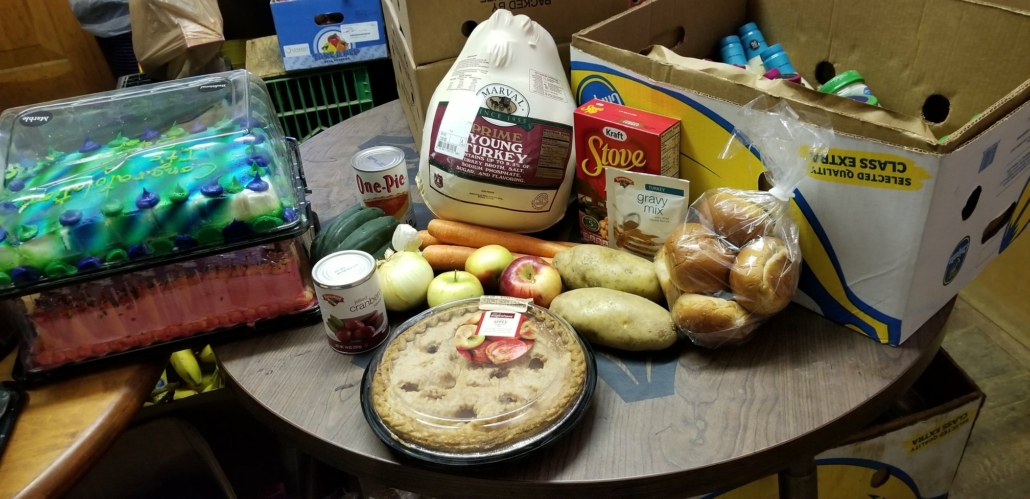
Due to extremely heavy demand for its food pantry services, Winslow Community Cupboard is seeking local individuals and organizations to help “Replenish the Cupboard” by offering a monthly donation of $20 for each of the next six months. Every penny donated will go directly to help food-insecure children, seniors, and other adults in Winslow, Waterville, Clinton, and Benton—more than 140 families in all, with that total steadily rising.
Winslow Community Cupboard is a ministry of Winslow Congregational Church, 12 Lithgow Street, Winslow, which has served the local community since 1828.
If you or your organization might be able to contribute $20 per month for each of the next six months to help “Replenish the Cupboard,” please send a quick, easy email expressing your interest to Dave Carew, Volunteer Communications Director, Winslow Community Cupboard, at DaveCarew1964@AOL.com.
Pie sale planned in conjunction with awards ceremony
/0 Comments/in Events, Rockport/by Website Editor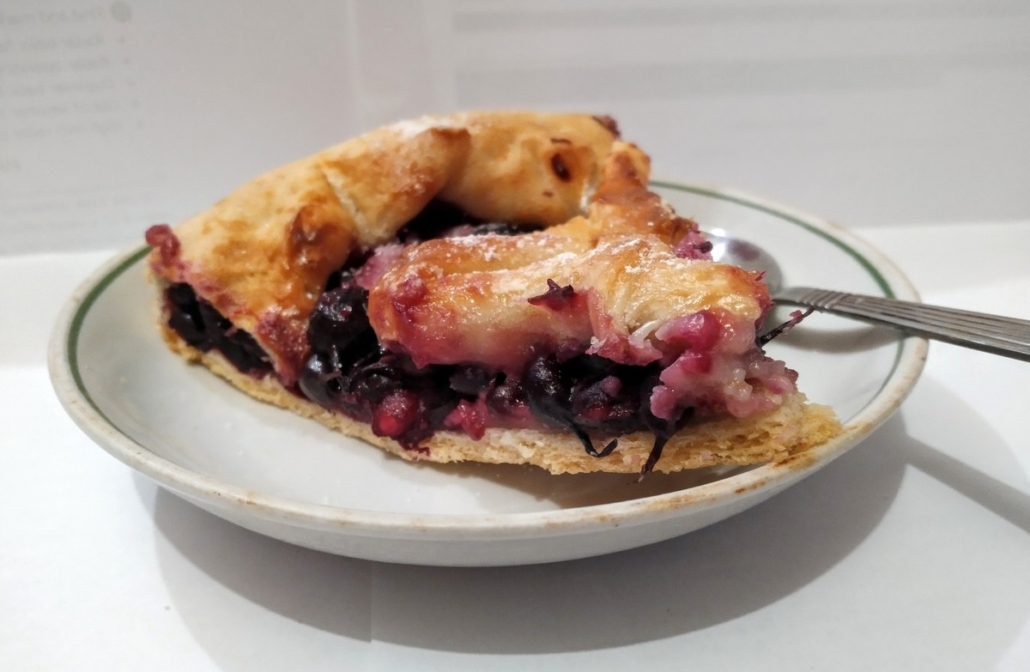 Knox-Lincoln Soil & Water Conservation District is holding a pie sale and fundraising raffle in conjunction with their first virtual awards celebration on November 10. All are invited to pre-order a pie or purchase raffle tickets for great prizes, whether attending the awards celebration or not.
Knox-Lincoln Soil & Water Conservation District is holding a pie sale and fundraising raffle in conjunction with their first virtual awards celebration on November 10. All are invited to pre-order a pie or purchase raffle tickets for great prizes, whether attending the awards celebration or not.
Raffle tickets are $1.50 each or $6 for five and must be purchased by Sunday, November 8. Local businesses and organizations have donated the following prizes:
ReVision Energy Gift Basket: Gift Basket includes $500 gift certificate toward a solar array from a local, employee-owned full-service solar company with in-house engineers, highly-qualified and experienced solar installers, and a dedicated support team with 24/7 emergency service. Retail value: $550
Hidden Valley Nature Center Overnight: Spring, summer, fall or winter – spend the night at one of HVNC’s wilderness yurts or lakeside cabins complete with woodstove, wood and outhouse. Bring sleeping bags, food and water to enjoy “getting away from it all” so close to home. Retail value: $60 – $80
Mystic Woodworks Cutting Boards: Beautiful and functional, these boards have been locally-made in Warren for 30 years. Mystic Woodworks has closed, so this is your last chance for one of these beauties. Each board is 7″ x 16″, not including the handle. Take your pick of maple/walnut or oak/walnut. Retail value: $62 each
Knox-Lincoln SWCD 2021 Plant Sale Gift Certificate: Choose from more than 200 varieties of fruit trees, berries, native trees & shrubs, and organically grown native perennials. Our 2021 sale will be pre-order only with scheduled curbside pick-up at Union Fairgrounds on May 8, 2021. Catalog and certificate will be mailed in January. Retail value: $50
Coastal Maine Botanical Gardens Family Membership: Membership for two adults & children/grandchildren in the same household includes one year admission to CMBG and other botanical gardens, member discounts to events, programs and the Garden Shop, and lots more: Retail value: $100
Sasanoa Brewing Gift Basket: Sasanoa is a rustic, coastal brewery and one of the few certified organic breweries in the US. The beers & ales are made with certified OG fruit, herbs, nuts, NE sourced grains & hops, as well as wild foraged ingredients.
Nine varieties of freshly baked, homemade pie will be available from D-Zerts by Daphne, of Westport Island. Your choice of Apple, Apple-Cran-Raisin, Blueberry, Four-Berry, Peach-Blackberry, Peach-Blueberry, Peach-Raspberry, Pecan and Tollhouse. Pies are $17 each and must be pre-ordered by Tuesday, November 3, for pickup on Monday, November 9, in either Rockport or Edgecomb.
All prices for tickets and pies include tax and processing fees. For more information and to purchase raffle tickets and place pie orders, visit our website at www.knox-lincoln.org/pie-raffle-tickets, call 596-2040 or email julie@knox-lincoln.org.
Up and down the Kennebec Valley: Mail delivery – Conclusion
/0 Comments/in Augusta, Benton, China, Local History, Maine History, Sidney, Vassalboro/by Mary Growby Mary Grow
The previous article talked about postal service in the southern part of the central Kennebec Valley. This article completes the story with summary postal histories of Sidney, Fairfield, Benton, and Clinton, plus miscellaneous notes.
As mentioned in last week’s article (see The Town Line, Oct. 15), Henry Kingsbury found Sidney had six post offices at various times. Alice Hammond built on his information in her history of Sidney to provide additional information on several of them.
The earliest Sidney post office dated from 1813, when Stephen Springer became postmaster on March 13. It was on River Road, location unspecified.
The Sidney post office was probably toward the southern end of town, because Hammond wrote that the North Sidney post office opened in January 1854 toward the north end of River Road. According to Kingsbury, first Postmaster John Merrill served until August 1867, when Stephen Springer took over and served for almost 16 years. (With a 41-year interval between appointments, it was probably not the same Stephen Springer.)
Meanwhile, the Sidney Centre post office opened at Bacon’s Corner, on Middle Road, in 1827. (Google locates Bacon’s Corner at the intersection of Middle Road with Dinsmore and Shepherd roads, not far south of the James H. Bean School.)
Four years later, in 1831, the West Sidney post office opened for the first time. Hammond wrote that it had the distinction of being discontinued four times “for want of a proper person to run” such an undistinguished and unprofitable operation. (A contemporary map on line identifies West Sidney as the intersection of the south end of Pond Road with Route 127.)
Sidney’s fifth post office was named Eureka – Hammond gave no explanation — and was on the north end of Middle Road, toward the Oakland line. Opened in 1879, closed in 1886 and reopened in 1887, it closed for good in 1902.
The final Sidney post office, which operated only from 1891 to 1902, was named Lakeshore. Neither Hammond nor Kingsbury suggested a location; presumably the lake referred to was Snow Pond (Messalonskee Lake).
Hammond wrote that Martha C. Bacon was the first Lakeshore postmaster; Moses Sawtelle followed her, but she had the job back when the office closed permanently in 1902. Hammond’s history has a photo of former post office “pigeon holes” – rows of open-front wooden boxes that appear to be four or five inches square – in the Bacon house.
The Fairfield bicentennial history lists seven post offices serving seven villages: Fairfield, Fairfield Corners, Kendall’s Mills (now downtown Fairfield), East Fairfield, North Fairfield, Larone and Somerset Mills (now Shawmut). The Fairfield post office was established in 1807; in 1872, the name was changed to Fairfield Center.
The Fairfield Corners post office (1822 to 1882) was at what is now Nye’s Corner, on the Kennebec between Shawmut and East Fairfield.
The Kendall’s Mills post office is undated; the history says its name was changed to Fairfield in 1872. It was relocated at least twice before 1938, when the current building, which the history says cost $50,000, came into use in January.
East Fairfield is now Hinckley. The Fairfield history has an undated photo of a large three-story building with two-story and one-story annexes, identified as Palmer’s Store and the Hinckley post office.
The history gives no date for the establishment of the post office in the mostly Quaker North Fairfield settlement. It closed in 1908; a 1913 photo of the village shows the building and adjacent store.
There are no dates for the Larone post office, either. The history says after the village grew enough to rate mail service, two residents of nearby Norridgewock helped villagers petition successfully to get mail delivered by the stagecoach that ran from Waterville to Norridgewock.
The Shawmut post office was called Somerset Mills from 1853 to 1889, when it became Shawmut.
Clinton’s mail was carried after 1816 by a horseback rider going from Winslow to Bangor, Kingsbury wrote. The earliest of Clinton’s three post offices was established June 13, 1836, at East Clinton (after July 2, 1842, simply Clinton), and the rider began coming twice a week. About 1850, the stagecoach driver going from Augusta to Bangor became the mail carrier.
On June 10, 1825, the Pishon’s Ferry or North Clinton post office opened on the east bank of the Kennebec River opposite Hinckley. The third post office, at Morrison Corner, was established Nov. 10, 1891, Kingsbury wrote. (The contemporary Google map shows Morrison Corner as the intersection of Battle Ridge, Peavey and Hinckley roads.)
Benton separated from Clinton in March 1842, was Sebasticook for eight years and in March 1850 became Benton. According to Kingsbury, the first two of its four post offices also had a habit of changing their names.
Post office number one was established July 29, 1811, as Clinton; became Sebasticook May 11, 1842; and became Benton June 1, 1852. Post office number two opened Aug. 5, 1858, as East Benton; became Preston Corner on Dec. 28, 1887 (Daniel Preston was postmaster); and was changed back to East Benton May 29, 1891.
The other two post offices were at Benton Falls, opened May 31, 1878, and Benton Station, opened Jan. 27, 1888.
* * * * *
The rural free delivery (RFD) system began operating in Sidney and Vassalboro in 1901, Hammond and Alma Pierce Robbins wrote. Mail from Augusta was distributed to roadside boxes in those two towns. In 1902, Oakland and Waterville also began RFD service, with the north end of Sidney getting mail from both. As Hammond describes the expansion of the service in Sidney, service from Augusta replaced the Sidney and Sidney Centre post offices in 1901 and the West Sidney post office in 1902; Waterville replaced North Sidney in 1902; and Oakland took over Eureka and Lakeshore in 1902.
Ruby Crosby Wiggin wrote that RFD started in Albion July 1, 1903, with three mailmen, Charles Byther, Arthur Skillin and Elmer Wiggin. Each mailman was directed to ask residents on his route to buy and put up a mailbox. Historian Wiggin quotes mailman Wiggin’s account of the resident who scoffed at this new idea and promised to buy a mailbox after he saw Wiggin delivering the mail.
In Palermo, Milton Dowe wrote, a petition to institute RFD was circulated early in the 20th century; there was a lot of opposition, but the system was inaugurated on Nov. 15, 1904. The East and Center Palermo post offices were discontinued immediately; the one at North Palermo stayed open a few years longer.
* * * * *
Waterville, like Augusta, has a historic post office building, located at 1 Post Office Square, in the southern triangle of the X-shaped intersection of Main Street, Elm Street, Upper Main Street and College Avenue. The elaborate one-story masonry building, now housing commercial establishments, was added to the National Register of Historic Places on April 18, 1977.
Wikipedia says the Greek Revival building was built in 911; the architect was James Knox Taylor. Taylor was the supervising architect for the U. S. Treasury Department from 1897 to 1912, giving him credit for hundreds of federal buildings all over the country.
Waterville’s current post office at 33 College Avenue was officially named the George J. Mitchell Post Office Building by an act of Congress approved Sept. 6, 1995. (See The Town Line, July 23, for information on the former Senator.)
* * * * *
Current post offices in the central Kennebec valley in 2020, alphabetical by town or city, from U. S. Postal Service websites:
Albion: 36 Main Street. ZIP 04910
Augusta:
Augusta: 40 Western Avenue. ZIP 04330
Water Street: 295 Water Street. ZIP 04330
Benton apparently does not have a post office within town boundaries. ZIP 04901.
China:
China Village, 19 Main Street. ZIP 04926.
South China, 382 Route 3. ZIP 04358.
Clinton: 15 Railroad Street. ZIP 04937.
Fairfield:
Fairfield: 130 or 132 (sources disagree) Main Street. ZIP 04937.
Hinckley: 753 Skowhegan Road. ZIP 04944.
Shawmut: 117 Bray Avenue. ZIP 04975.
Palermo: 111 Branch Mills Road. 04354.
Sidney apparently does not have a post office within town boundaries. ZIP 04330.
Vassalboro:
East Vassalboro: 361 Main Street. ZIP 04935.
Vassalboro: 25 Alpine Street. ZIP 04989.
North Vassalboro: 847 Main Street. ZIP 04962.
Waterville: 33 College Avenue. ZIP 04901 (P.O. Boxes 04903.).
Windsor: 519 Ridge Road. ZIP 04363.
Winslow: 107 Clinton Avenue (in The 107 convenience store, by contract). ZIP 04901.
Main sources
Dowe, Milton E., Palermo, Maine Things That I Remember in 1996 (1997).
Fairfield Historical Society, Fairfield, Maine 1788-1988 (1988)
Grow, Mary M., China Maine Bicentennial History including 1984 revisions (1984).
Hammond, Alice, History of Sidney Maine 1792-1992 (1992).
Howard, Millard, An Introduction to the Early History of Palermo, Maine (second edition, December 2015).
Kingsbury, Henry D., ed., Illustrated History of Kennebec County Maine 1625-1892 (1892).
Robbins, Alma Pierce, History of Vassalborough Maine 1771 1971 n.d. (1971)
Whittemore, Rev. Edwin Carey, Centennial History of Waterville 1802-1902 (1902).
Wiggin, Ruby Crosby, Albion on the Narrow Gauge. (1964)
Websites, miscellaneous.
LETTERS: What about the USPS?
/0 Comments/in Letters to the Editor/by Website Editor To the editor:
To the editor:
To everyone running for government office, I have a question for each and everyone of you: What are you going to do about this problem with the United States Postal Service? Talking to a very wise and experienced postmaster, who made this statement: “If this government dissolves the USPS there goes our last and only mode of privacy.”
I won’t go on about these now quasi civil servants who bring elderly people like me, without a smart phone, computer and other tech apparatus, my only touch with the modern world. Yes, TV, but most of that is garbage and you politicians know it. Haven’t seen or heard one of you mention the USPS so am I to understand it’s a non-issue?
I know we’re running out of time, but I hope your readers ask this question.
Frank Slason
Somerville
LETTERS: AARP is politically nonpartisan
/0 Comments/in Letters to the Editor/by Website Editor To the editor:
To the editor:
As we get closer to Election Day, the number and intensity of attack ads continues to grow. Unfortunately, I continue to see political ads that mention AARP and imply a candidate’s endorsement here in Maine. I want to be clear on this: AARP is entirely nonpartisan. We do NOT endorse or oppose candidates or political parties! We do not give money to candidates and we do not have a Political Action Committee to support any candidate or party. We focus on the issues important to older Americans and encourage all candidates to voice their positions on those issues, so that all voters know exactly what candidates will do if elected.
What issues are those? Social Security for one. It is our bread-and-butter issue, and for many of our members, it is literally their bread and butter. Social Security must be preserved, especially for the almost 25 percent of Maine beneficiaries 65-and-over who depend on Social Security for 90 percent of their income.
What else do we fight for? Protecting and strengthening Medicare, which provides affordable health care for almost 300,000 older Mainers. Hard-working Mainers pay into the program their entire working lives and are guaranteed coverage that help make health care accessible and affordable.
Along with Medicare, we are fighting to lower prescription drug prices. Too many Mainers struggle to afford their life-saving medications while the pharmaceutical companies line their pockets. While we have made progress in Augusta, we need Washington to do more to reduce out of control drug prices.
How do we win on those issues? Through the power of our members’ votes. Voting is what counts. We stand by our members and fight for issues important to those ages 50 and over, and their families.
We are not just bipartisan. We are nonpartisan. We fight for issues, not candidates. We make sure candidates know about the issues that our members passionately care about and we will work with any elected official who will fight for these issues, too.
And our members vote. In 2016, over 80 percent of Mainers 65+ voted compared to the national average of 71 percent. As you can see, our members are serious about making their voices heard. We’re a fierce defender of age 50+ voters in Maine.
We work hard at the Maine State House on other issues, too. We push for things such as long-term care services and supports so we can age in our own homes; increased affordable housing; fair utility rates; improving access to retirement options for those without any, to name just a few.
And did I mention fighting for improved high-speed internet affordability and access? As part of a broad coalition we, with the help of our close to 230,000 members, pushed for support of a broadband referendum during the July primary and 75 percent of Maine voters supported the measure. Because of the impact of our many members, we make a positive difference.
About the ads I mentioned above? We issued news releases and contacted the candidate’s campaigns’ to let everyone know that the ad was produced without the knowledge or consent of AARP.
If you see a political ad showing the AARP logo or implying our endorsement of a candidate, contact us a me@aarp.org. We need to know so we can preserve our independence as a nonpartisan, nonprofit organization that fights for age 50+ Mainers.
Lori Parham
AARP Maine State Director, Portland
Interesting links
Here are some interesting links for you! Enjoy your stay :)Site Map
- Issue for July 3, 2025
- Issue for June 26, 2025
- Issue for June 19, 2025
- Issue for June 12, 2025
- Issue for June 5, 2025
- Issue for May 29, 2025
- Issue for May 22, 2025
- Issue for May 15, 2025
- Issue for May 8, 2025
- Issue for May 1, 2025
- Issue for April 24, 2025
- Issue for April 17, 2025
- Issue for April 10, 2025
- Issue for April 3, 2025
- Issue for March 27, 2025
- Issue for March 20, 2025
- Issue for March 13, 2025
- Issue for March 6, 2025
- Issue for February 27, 2025
- Issue for February 20, 2025
- Issue for February 13, 2025
- Issue for February 6, 2025
- Issue for January 30, 2025
- Issue for January 23, 2025
- Issue for January 16, 2025
- Issue for January 9, 2025
- Issue for January 2, 2025
- Sections
- Our Town’s Services
- Classifieds
- About Us
- Original Columnists
- Community Commentary
- The Best View
- Eric’s Tech Talk
- The Frugal Mainer
- Garden Works
- Give Us Your Best Shot!
- Growing Your Business
- INside the OUTside
- I’m Just Curious
- Maine Memories
- Mary Grow’s community reporting
- Messing About in the Maine Woods
- The Money Minute
- Pages in Time
- Review Potpourri
- Scores & Outdoors
- Small Space Gardening
- Student Writers’ Program
- Solon & Beyond
- Tim’s Tunes
- Veterans Corner
- Donate


